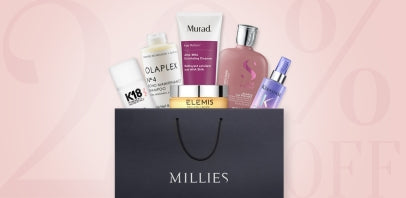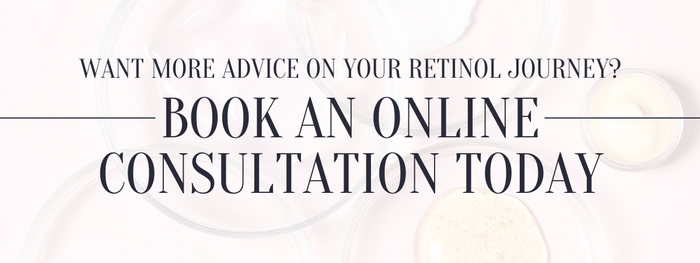

Subscribers Get More
New subscribers enjoy 20% off. Join our community, sign-up to our newsletter & be the first to hear about new product launches and exclusive promotions.

New subscribers enjoy 20% off. Join our community, sign-up to our newsletter & be the first to hear about new product launches and exclusive promotions.
Thank you for supporting Irish business
Learn MoreNo code required. Some exclusions apply. See T&Cs for more info.
Learn MoreNo code required. Some exclusions apply. See T&Cs for more info.
Learn MoreSubscribe to our newsletter & enjoy 20% off your next order. Be the first to hear about exclusive offers, new product launches and promotions.
Learn MoreBe the first to hear out upcoming Skincare Masterclasses and Wellness workshops with our experts.
Learn MoreJoin the waitlist and be first in line for complimentary gift* with purchase when hero brand launches.
Learn More

Retinol, a vitamin A derivative, is mainly used to treat skin concerns such as acne and ageing. It works by stimulating the development of skin cells. Also, retinol acts as an exfoliator, boosting collagen formation and reducing the visibility of fine lines and wrinkles. The result: a smoother, clearer, more youthful, and plumper complexion.
It may take several weeks to see any improvements from your retinol-containing skincare products, but consistency is key.
What is good for? Retinol is great for treating the following skin concerns:
Retinol is one of the best-known skincare ingredients on the market. It is derived from Vitamin A. There are many forms of vitamin A and retinol is just one of them. Everyone needs vitamin A for their skin to function healthy.
Retinol is not Retinoid, although part of the same family Retinol is a much weaker form and that is why it can be sold over the counter. Prescription retinoids are much more potent than retinol.
Retinol goes deep beneath the epidermis to your dermis and helps to neutralise free radicals. It boosts production collagen and elastin which creates a plumping effect that can reduce the appearance of fine lines, wrinkles, enlarged pores and acne.
Our advice is always check with your general practitioner (GP). Each brand is different when it comes to using vitamin A while pregnant. Women looking for a good alternative to retinol while pregnant or breastfeeding, might consider the more natural ingredient Bakuchiol. It functions similarly to retinol in terms of increasing cell turnover, stimulating collagen production and fighting signs of ageing and is perfectly safe while pregnant.
So, there is a rule of thumb for when it comes to retinol, and it is you should always start slowly and increase the amount as your skin climatises to it. If starting a new product I would introduce a pea-sized amount 1-2 times on the first week and then 2-3 times the following week. It is so important you don’t overuse retinol as your skin can respond and become sensitive and dry in areas. If your skin seems to be not climatising to the retinol, you should buffer it with a moisturiser to dilute it and then gradually reduce the buffer altogether. Always consult with your skin consultant for the best advice.
How Long does it take to see results?
Results will always depend on the potency level found in the formula. If you are using retinol for ageing purposes the results can be lengthy, you won’t get them over night. Remember retinol boosts collagen production and this needs about 2-3 months before seeing visible results. The good news is after just using it’s a few times you should see your skin smoother and brighter due to cell turnover.
Always consult with your skin consultant when you have finished a product.
What if My skin cannot tolerate Retinol?
If your skin cannot tolerate any form of Vitamin A topically then I would recommend taking orally. Try the Advanced Nutrition Skin Vit A + which will not only help your skin look healthy but also supports strong muscles and bones.
Consult with your skin consultant to see what options they might have.
Retinol Golden Rule
ALWAYS wear an SPF!! At Millies as you know we recommend an SPF every day, but especially if using a retinol skincare product. As retinol works by increasing cell-turnover your skin may be temporarily thinner or more sensitized.
Exfoliators such as AHA’s & BHA’s shouldn’t really be used with a retinol, as you are doubling up the exfoliation process and could end up compromising the skin’s natural barrier and cause irritation.
How and when to use Retinol?
As I mentioned, its always best to introduce retinol slowly. A retinoid response can be avoided by gradually introducing it your skin so that your skin builds up a tolerance to the retinol.
When to avoid?
If you suffer from hypersensitivity or rosacea, eczema, or psoriasis its best to avoid high concentrated retinol, for these types of concerns we would always focus on barrier repair and start off on a low vitamin A or oral vitamin A.
It’s very easy to overdose your skin with retinol and that’s why speaking to your skin consultant is so important. Always check if the retinol is encapsulated, this technology helps overcome issues.
When to use?
Retinol can be used morning and night, if you are going to apply in the morning, I cannot emphasise how important a SPF is over it. Retinol increases cell turnover so the skin can be photosensitive, so it is important to provide the skin with a broad-spectrum SPF to avoid any photodamage.
I would always recommend applying your retinol onto the skin before any other cream or serum. We want the Vitamin A to penetrate the skin and not to have to fight its way through other products that have been applied prior.
You can always add your retinol into a product to dilute it down if you are climatizing your skin to it and then eventually remove buffer cream.
Where does retinol fit in your skincare routine:
It is important to maintain a balanced regime with ingredients to target hydration and repair alongside retinol.
Ingredients that work together with Retinol:
Pam’s Top 3 Retinol Products:
Favourite Bakuchiol Products:

Book an appointment with one of our skin experts today and they will create a customised skincare routine to treat your concerns.